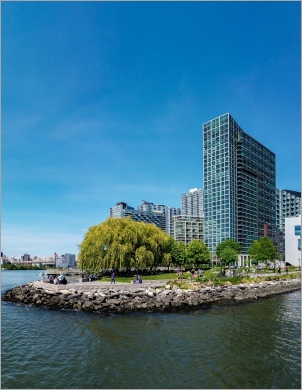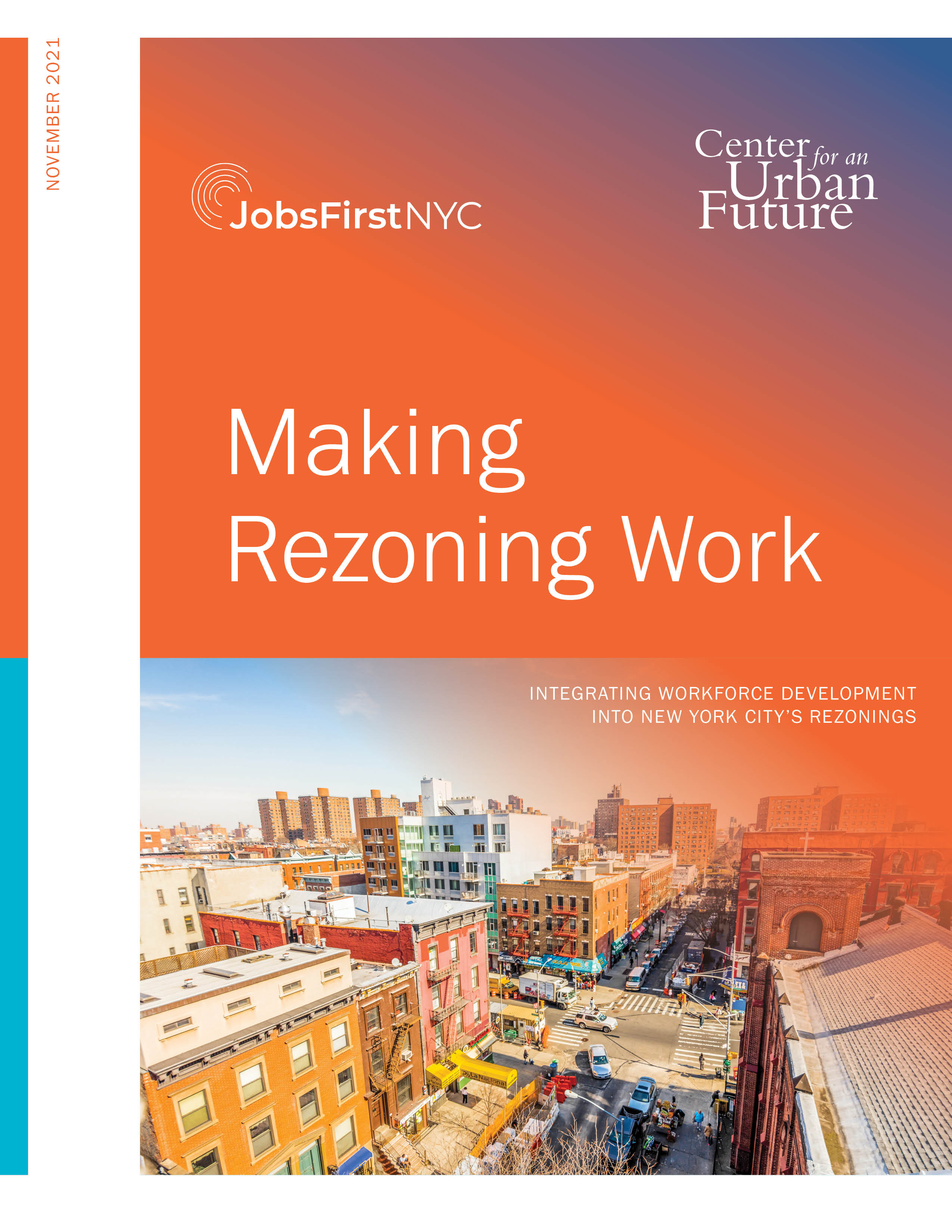Making Rezoning Work: Integrating Workforce Development into Neighborhood Rezoning
Speech Delivered at the 2022 New York City Employment and Training Coalition Annual Conference
October 13, 2022
My name is Eli Dvorkin and I’m the editorial and policy director at the Center for an Urban Future. We’re an independent, nonprofit research and policy organization focused on building a stronger and more equitable economy across all five boroughs.
There are a lot of things that city leaders can do to advance equity and rebuild a thriving economy. In fact, our latest report, City of Aspiration, offers up 150 concrete ideas from New Yorkers to do just that.
But I said I’d stick with a single idea for this talk. So here it is:
New York City should seize on the enormous but largely untapped opportunity to integrate strategic investments in workforce development into, and in advance of, major zoning changes.
We make the case for this approach in a 2021 report, titled Making Rezoning Work, that we produced in partnership with JobsFirstNYC.
So why is this idea necessary and how would it work?
Right now, policymakers across New York City are reckoning with how to move land-use changes forward amid a severe housing shortage, with a recession looming, and in a city which is still down 141,000 jobs since February 2020.
But when it comes to land-use changes that can unlock new housing and spur job growth, NYC faces a major logjam. Many elected officials, community leaders, and local residents are understandably concerned about the risk of displacement if zoning changes accelerate gentrification, as well as the strains on local infrastructure if the population grows without commensurate investments in everything from sewer systems and public parks to libraries and schools.
In other cases, land-use changes could enable new commercial or industrial development that can spark job creation and build up the city’s tax base. But unresolved questions over who benefits economically have caused divisions within communities and slowed or stopped projects that could otherwise benefit the city’s economy and its residents.
There’s little doubt that the status quo is unsustainable—but there is far less agreement on how to move land-use changes forward equitably and what steps are needed to maximize the benefits and mitigate the risks. In recent weeks, members of the City Council have laid out new principles of their own for garnering their support for land-use changes. But while many of these principles are intended to ensure that new housing is deeply affordable and that current residents are not displaced, another side of the equation has been almost entirely absent: investments that can help local residents get on the path to better-paying jobs and careers. After all, what makes housing affordable isn't just the cost of rent, it's also the income of the resident.
That’s why city officials should make investments in career training and workforce development an integral part of the rezoning process—and partner with local nonprofit intermediaries, community-based organizations, and effective workforce development providers to lay the groundwork for these investments in advance of major land-use changes.
Our report, Making Rezoning Work, revealed that investments in workforce development have been almost entirely absent from recent rezonings. In fact, while neighborhood rezoning plans of the past several years have included numerous commitments—from housing protections for current renters to new community spaces and playgrounds—workforce investments have been minimal or nonexistent. According to the city’s own commitment trackers, city government budgeted just $462,250 for job training initiatives focused on just two of the six residential neighborhoods approved for major rezoning since 2016. Of that, just $312,500 had been spent on new job training programs as of last year.
In fact, investments in workforce development as part of major land-use changes have typically come too late, or not at all. But it doesn’t have to be this way.
To earn the trust of communities that have been hit hardest by the pandemic—and ensure that new development benefits the New Yorkers most in need of economic opportunities—New York City will need to develop a bold new vision for building workforce development infrastructure at the neighborhood level. This approach should have three key ingredients:
First, the Adams administration and City Council should focus on strengthening neighborhood-level workforce networks by investing in existing intermediaries and on-the-ground organizations, from the Lower East Side Employment Network to the Brownville Hub Cooperative. New York is fortunate to have some place-based models already up and running, but too little has been done to invest in these approaches, grow them, and replicate them. The mayor’s team and Council leaders should work with the Department of Small Business Services, EDC, City Planning, and other agencies to help seed and scale these networks in every community citywide, starting with those where income is below the citywide average—ensuring that every community has the tools, resources, and capacity needed to connect residents to education, training, and employment before a major rezoning occurs.
Second, develop community toolkits for designing and planning workforce investments as part of any future neighborhood rezoning. City officials should work with intermediaries, community-based organizations, workforce development organizations, and educational institutions to develop a menu of options for building and strengthening local workforce networks—and share these options publicly at the beginning of a rezoning process. Without a framework like this, individual community members are left to advocate for these investments on their own, with limited results.
Third, these investments can be paid for, in part, through a system of citywide linkage fees for developers of large-scale real estate projects. Boston’s Neighborhood Jobs Trust does just that, by requiring developers to invest $2.37 for every square foot of new development into a fund set aside for job training, education, and support services—generating over $80 million since 2014.
Let me close by saying we can’t just rezone our way to a more equitable city. But by finally incorporating strategic investments in workforce development into, and in advance of, major land-use changes, city leaders can help expand economic opportunity in the communities that need it most.
Check out the full report, Making Rezoning Work.



